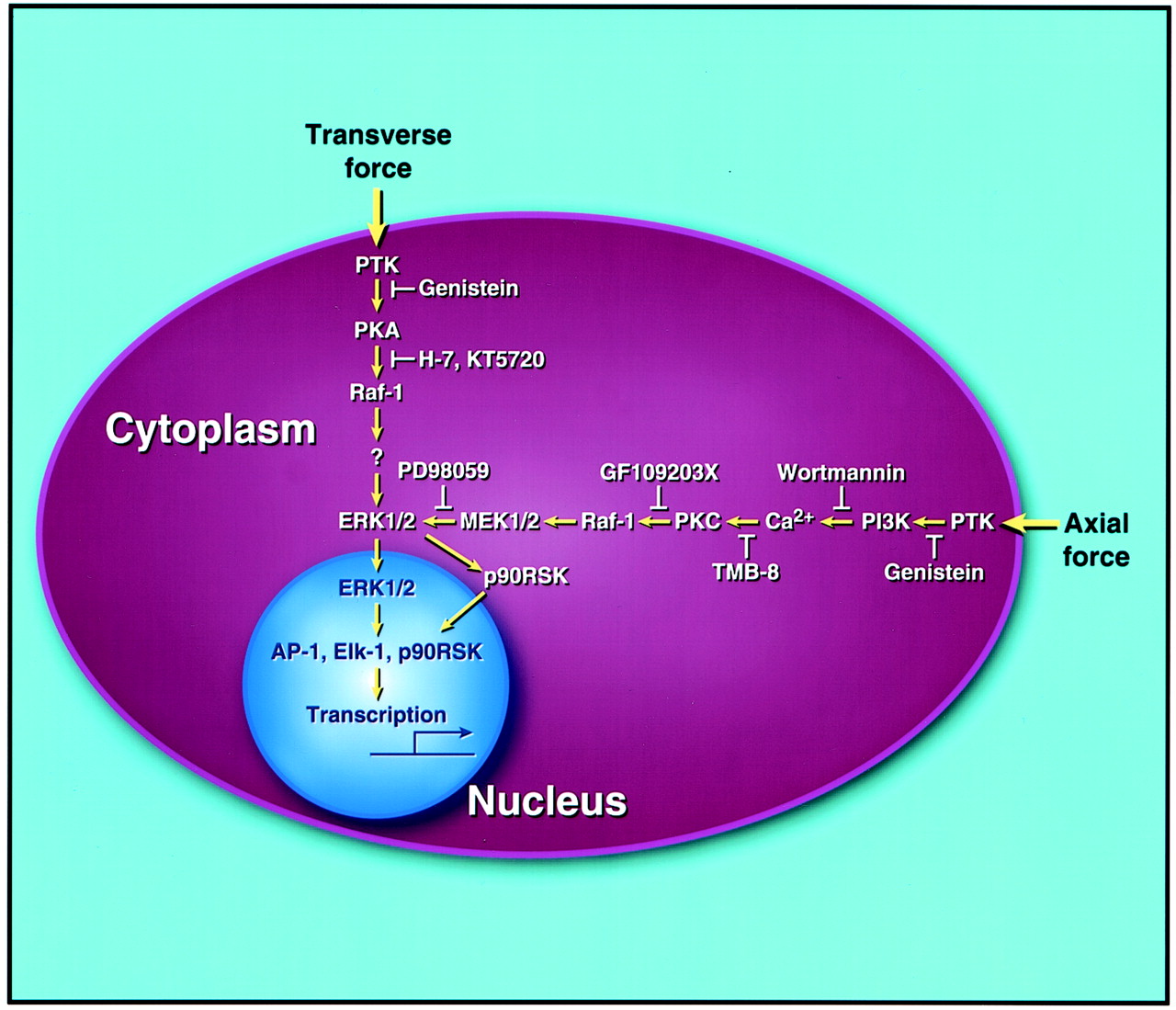Quote[/b] ]To create an enzyme, the cell must first transcribe the gene in the DNA into messenger RNA. The transcription is performed by an enzyme called RNA polymerase. RNA polymerase binds to the DNA strand at the promoter, unlinks the two strands of DNA and then makes a complementary copy of one of the DNA strands into an RNA strand. RNA, or ribonucleic acid, is very similar to DNA except that it is happy to live in a single-stranded state (as opposed to DNA's desire to form complementary double-stranded helixes). So the job of RNA polymerase is to make a copy of the gene in DNA into a single strand of messenger RNA (mRNA).
The strand of messenger RNA then floats over to a ribosome, possibly the most amazing enzyme in nature. A ribosome looks at the first codon in a messenger RNA strand, finds the right amino acid for that codon, holds it, then looks at the next codon, finds its correct amino acid, stitches it to the first amino acid, then finds the third codon, and so on. The ribosome, in other words, reads the codons, converts them to amino acids and stitches the amino acids together to form a long chain. When it gets to the last codon -- the stop codon -- the ribosome releases the chain. The long chain of amino acids is, of course, an enzyme. It folds into its characteristic shape, floats free and begins performing whatever reaction that enzyme performs.
Obviously, the process described on the previous page is not a simple one. A ribosome is an extremely complex structure of enzymes and ribosomal RNA (rRNA) bonded together into a large molecular machine. A ribosome is helped by ATP, which powers it as it walks along the messenger RNA and as it stitches the amino acids together. It is also helped by transfer RNA (tRNA), a collection of 20 special molecules that act as carriers for the 20 different individual amino acids. As the ribosome moves down to the next codon, the correct tRNA molecule, complete with the correct amino acid, moves into place. The ribosome breaks the amino acid off the tRNA and stitches it to the growing chain of the enzyme. The ribosome then ejects the "empty" tRNA molecule so it can go get another amino acid of the correct type.
An RNA polymerase enzyme attaches to a DNA strand at a gene's promoter. It then walks down the DNA and creates a copy of it into a strand of messenger RNA (mRNA).
The mRNA strand floats free and finds a ribosome.
A ribosome attaches to and walks down the mRNA strand to form a chain of amino acids for the enzyme that the gene represents. The amino-acid chain folds into the enzyme's characteristic shape and starts doing its thing.
There are RNA polymerase enzymes attaching to the DNA strand at the starting points of different genes and copying the DNA for the gene into an mRNA molecule.
The mRNA molecule floats over to a ribosome, which reads the molecule and stitches together the string of amino acids that it encodes.
The string of amino acids floats away from the ribosome and folds into its characteristic shape so it can start catalyzing its specific reaction.
The cytoplasm of any cell is swimming with ribosomes, RNA polymerases, tRNA and mRNA molecules and enzymes, all carrying out their reactions independently of each other.

